Buppharam Khmer Pagoda is located in Cai Gia Hamlet, Hung Hoi Commune, Vinh Loi District, Bac Lieu . The pagoda's sala is made of precious wood and is considered one of the unique Khmer architectural works that still remains intact in the Southwest region.
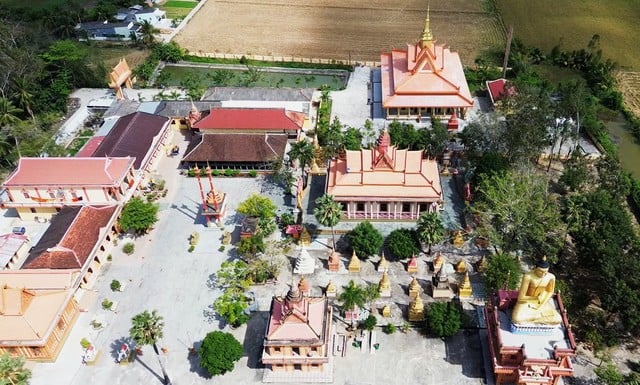
Buppharam Pagoda (also known as Chot Pagoda) was built in 1573.
PHOTO: DUY TAN
Rare wood construction
Chot Pagoda is about 6 km from the center of Bac Lieu City. The highlight of the pagoda grounds is the sala (lecture hall) built in 1915 - a rare wooden structure that has remained intact after more than a century.
Venerable Tang Sa Vong, abbot of Chot Pagoda, said that the sala was designed in the traditional Khmer stilt house architecture with 2 floors, 21 meters long, 10 meters wide, and over 10 meters high. The structure was built with more than 100 solid rosewood pillars, and the walls and floor were paved with sturdy thao lao wood.
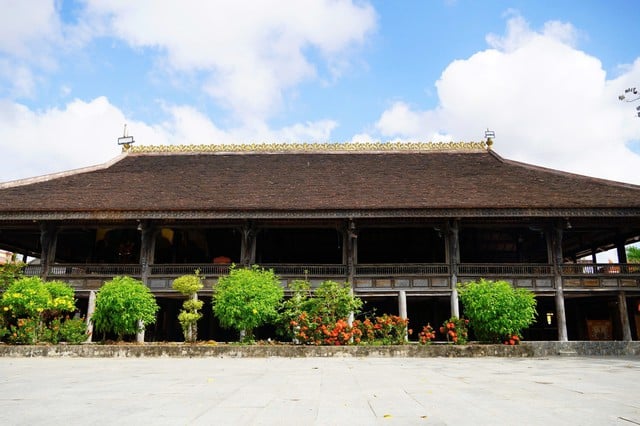
The sala is about 10 meters wide and 20 meters long, with a total of 100 large and small wooden pillars that have existed for over 100 years.
PHOTO: DUY TAN
Intricately carved wooden pillars depicting the Krut bird - a symbol of Khmer art - support the curved tiled roof. Most of the wooden statues and pillars were commissioned in Cambodia and transported by sea.
The upper floor of the sala is a place for monks to teach, and can accommodate hundreds of people at a time. The lower floor is used to store temple supplies and is a resting place for people and Buddhists who come to visit.
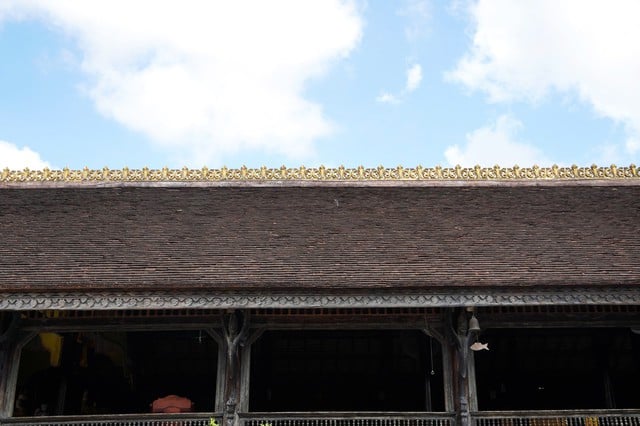
The building still retains the original yin-yang tiled roof ordered from Dong Nai , a traditional Southern architectural feature.
PHOTO: DUY TAN
What is special is that up to now, the building still retains the original yin-yang tile roof ordered from Dong Nai. This is also one of the very few remaining solid wood sala buildings in the South.
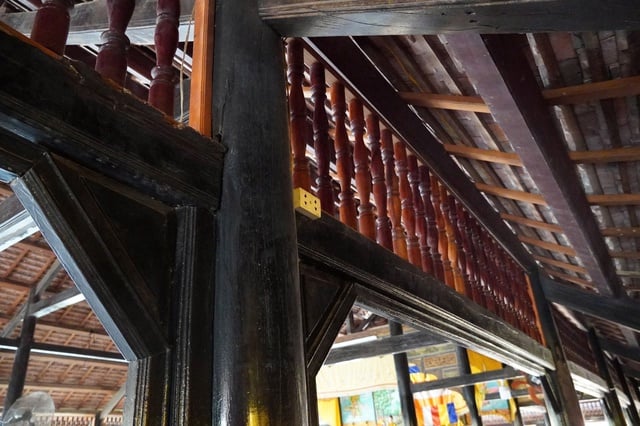
The decorations and sculptures are not too elaborate but have gone through a long time.
PHOTO: DUY TAN
Constantly renovating and maintaining the ancient Khmer pagoda
The Sala also bears the mark of a historical event that few people know about. In 1945, the enemy invaded the pagoda and burned the Sala. Thanks to the timely intervention of a Khmer cadre and the solidarity of the people, the fire was extinguished, preserving the Sala. On a wooden pillar on the upper floor, there is still a large scorch mark, a trace of the near-burning.
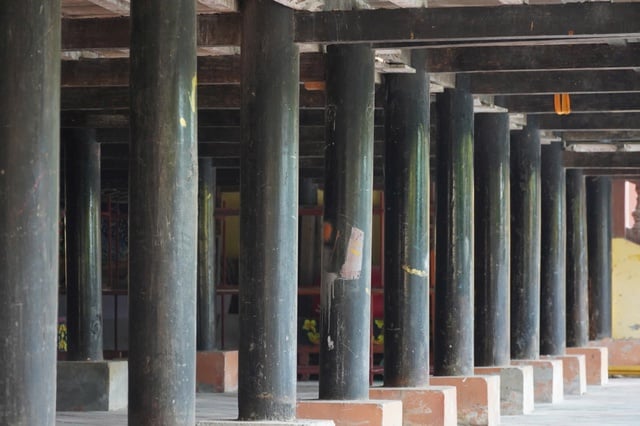
The precious wood used to make the sala was transported from Cambodia by sea.
PHOTO: DUY TAN
To preserve the century-old structure, over the years, the abbot, monks and local people have continuously renovated and maintained it. "Many other wooden salas have been dismantled to be built with concrete. That is also the reason why I decided to keep this wooden sala intact as a part of cultural memory," said monk Tang Sa Vong.
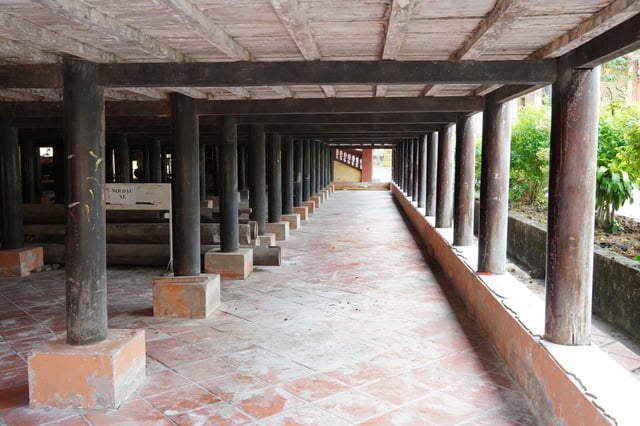
The building is built on 100 solid rosewood pillars, the walls and floor are paved with sturdy thao lao wood.
PHOTO: DUY TAN
The sala is still used by the temple for communal activities on the 15th or 30th of every month to chant sutras, pray for peace, and pray for the dead. Venerable Tang Sa Vong said that he has visited many Khmer temples, but has never heard of any place that still preserves a complete wooden sala.
In 2017, Chot Pagoda was included in the list of historical, architectural and scenic relics of the province by the People's Committee of Bac Lieu province. In addition to the wooden sala, Chot Pagoda also has two stone Buddha statues dating back to the 15th century.
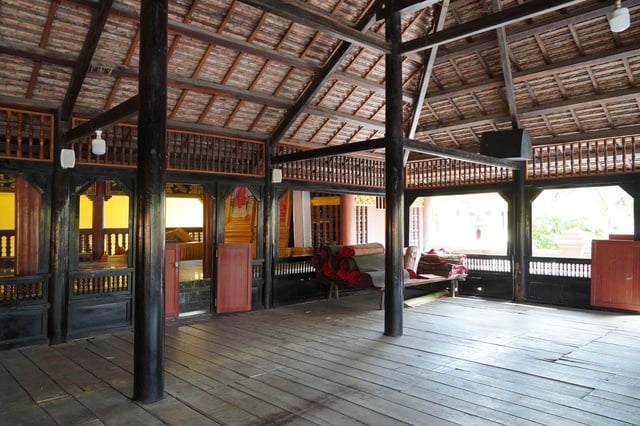
Inside the sala
PHOTO: DUY TAN
The pagoda also has a Sakyamuni Buddha statue with a 25-meter-high Buddha statue and a communal tower, built in 2 years with a total cost of nearly 2.5 billion VND contributed by Buddhists. The pagoda gate is located next to a rural road, imbued with Khmer cultural identity, and is a destination that attracts many tourists and Buddhists from near and far.
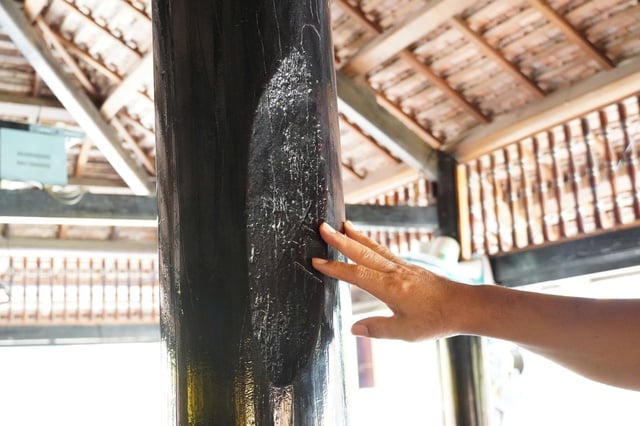
On a wooden pillar on the upper floor there is still a large scorch mark, a trace of the near-burning.
PHOTO: DUY TAN
According to the leader of the Department of Culture, Sports and Tourism of Bac Lieu, the sala has been inventoried by the relevant agencies and localities, and a dossier has been prepared to be submitted for approval to become a relic. Hopefully, in the future, this Khmer pagoda with its unique sala will become a tourist attraction when visiting the province.
Source: https://thanhnien.vn/doc-dao-chua-khmer-mien-tay-sala-bang-go-quy-tu-campuchia-dua-ve-theo-duong-bien-185250524093312226.htm


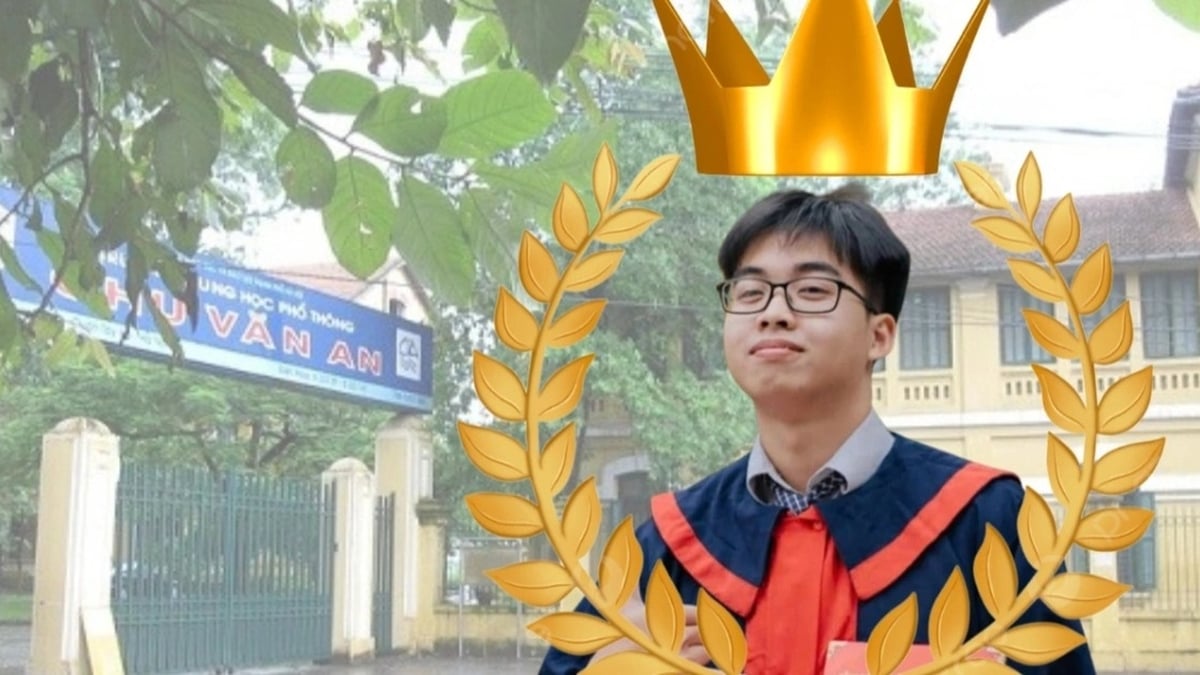


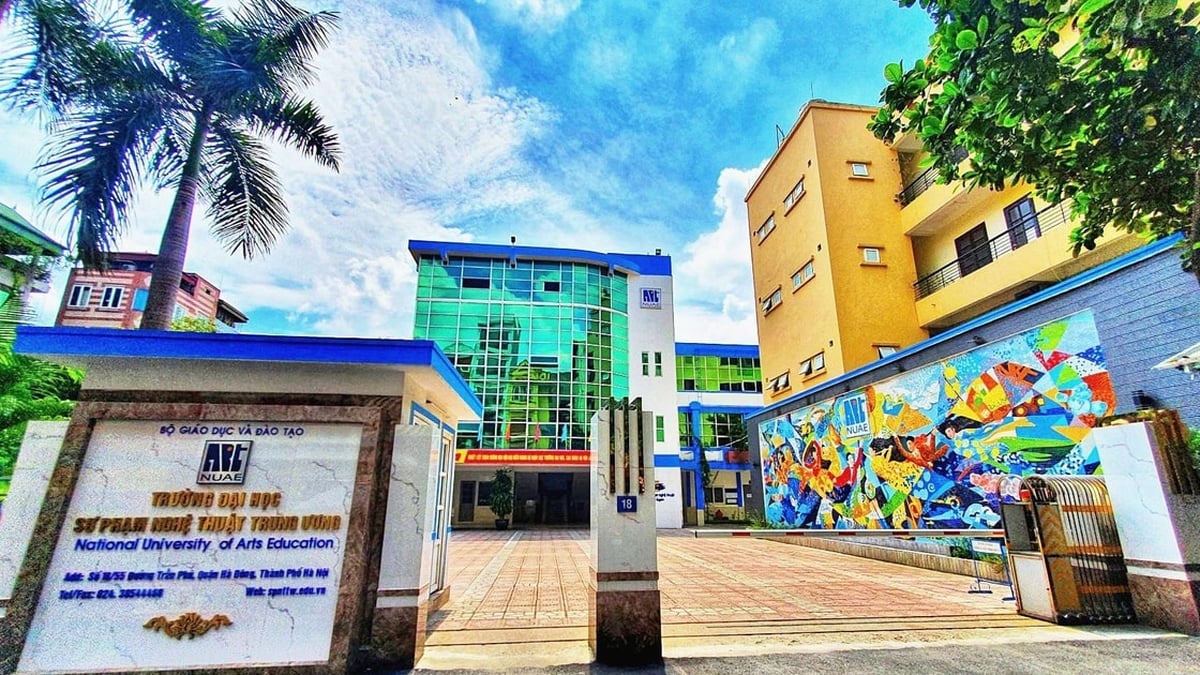

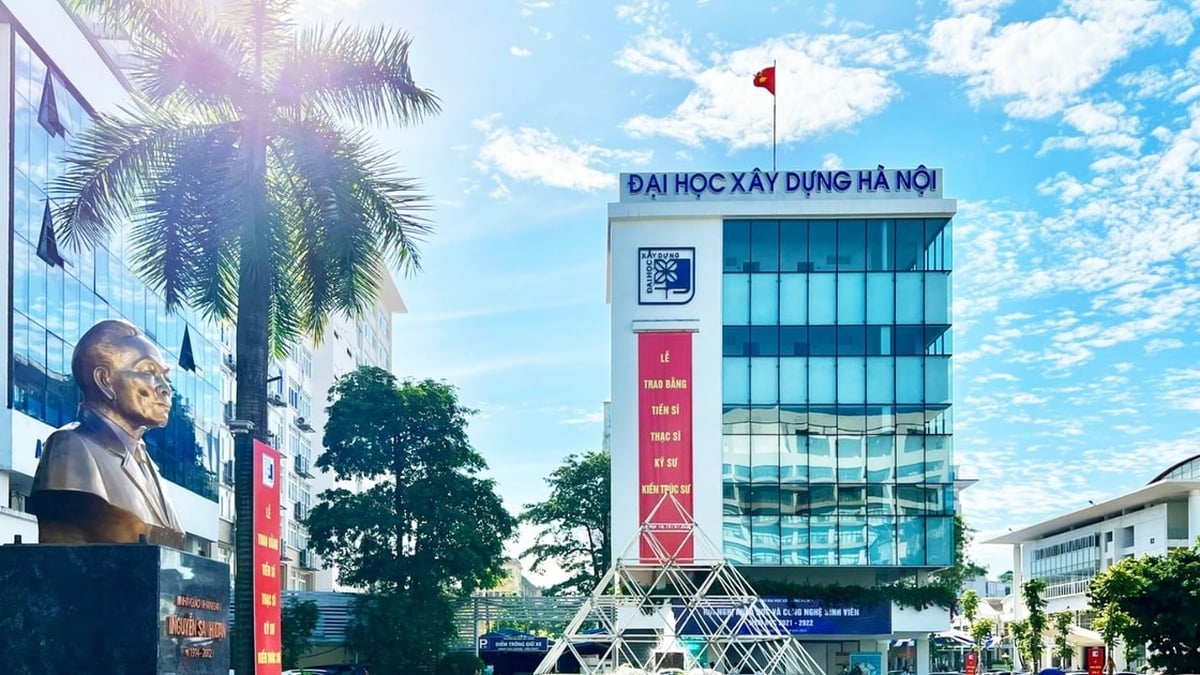



![[INFOGRAPHIC] Open-back headphones, look like a... pill](https://vphoto.vietnam.vn/thumb/1200x675/vietnam/resource/IMAGE/2025/7/16/cd63f007ad404018aa504c1009ce19ba)










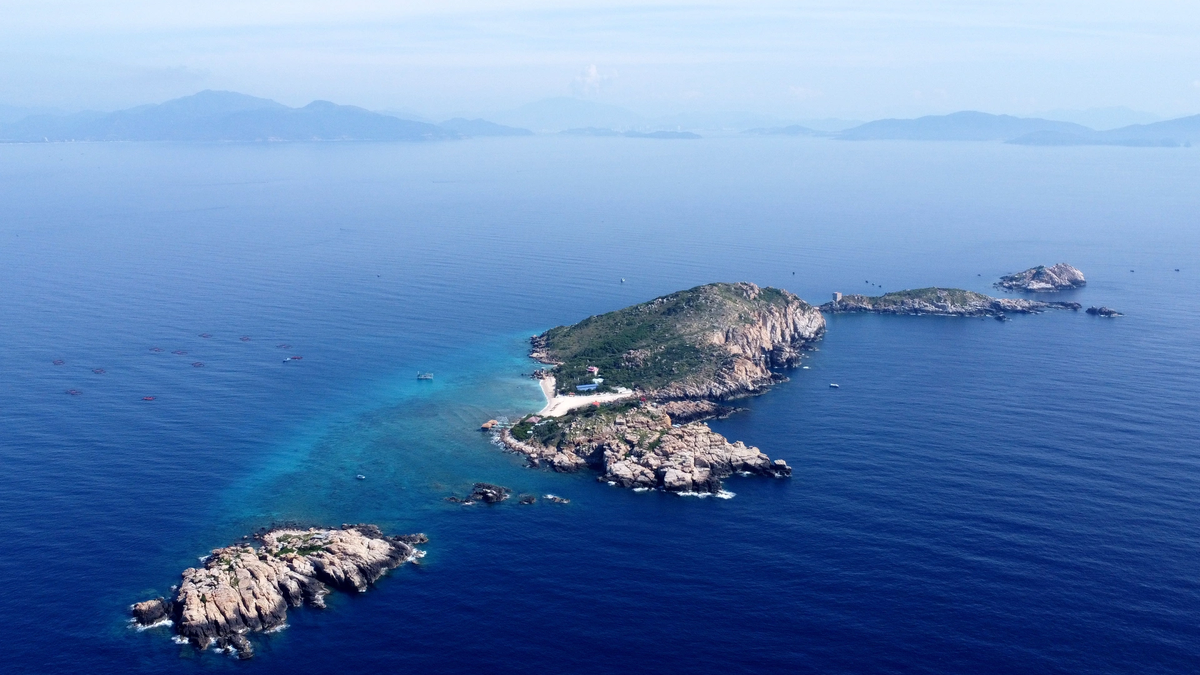















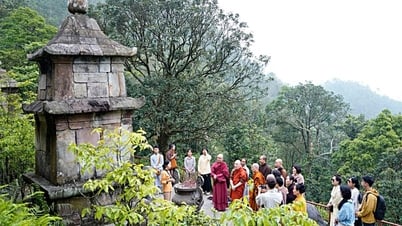

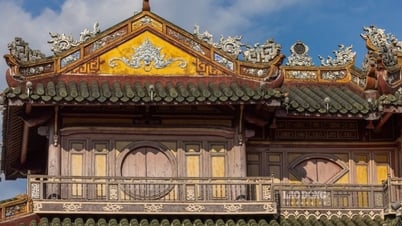

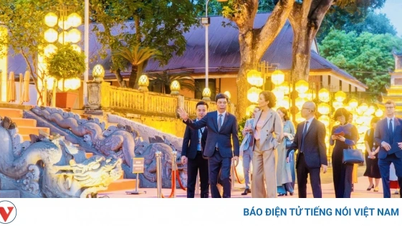

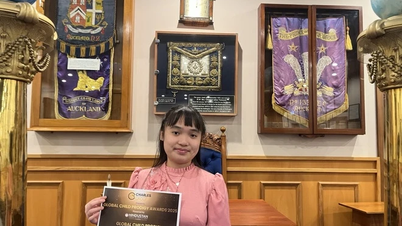
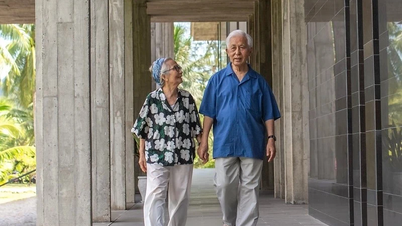

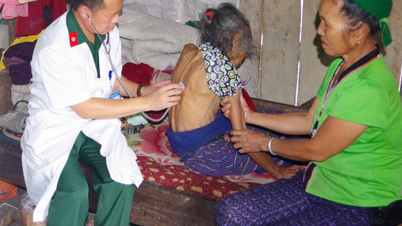

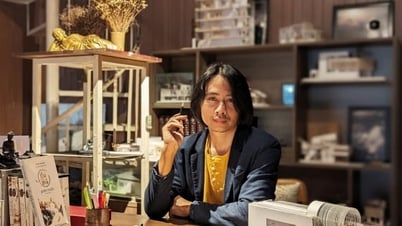



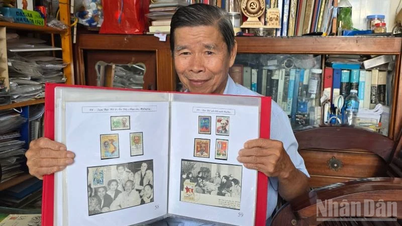











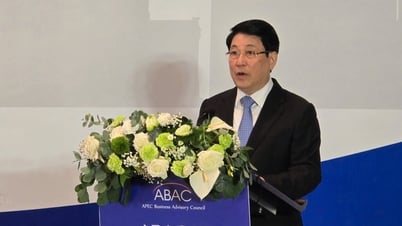


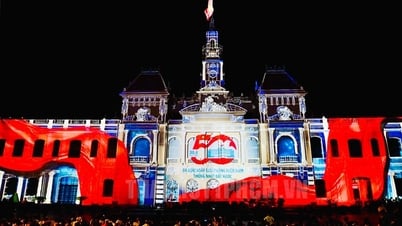
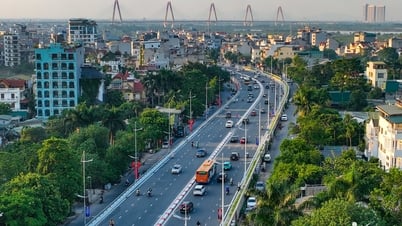
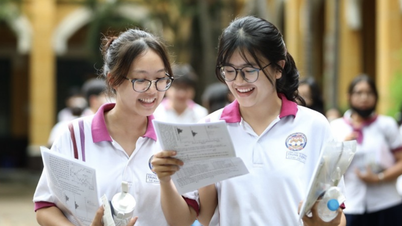




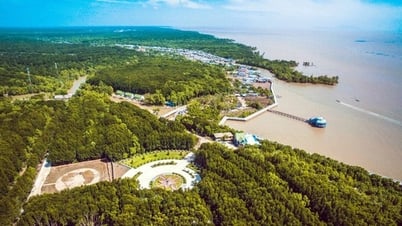
















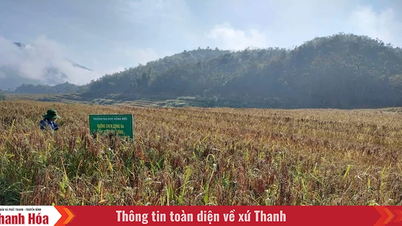

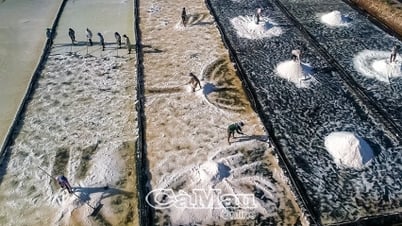




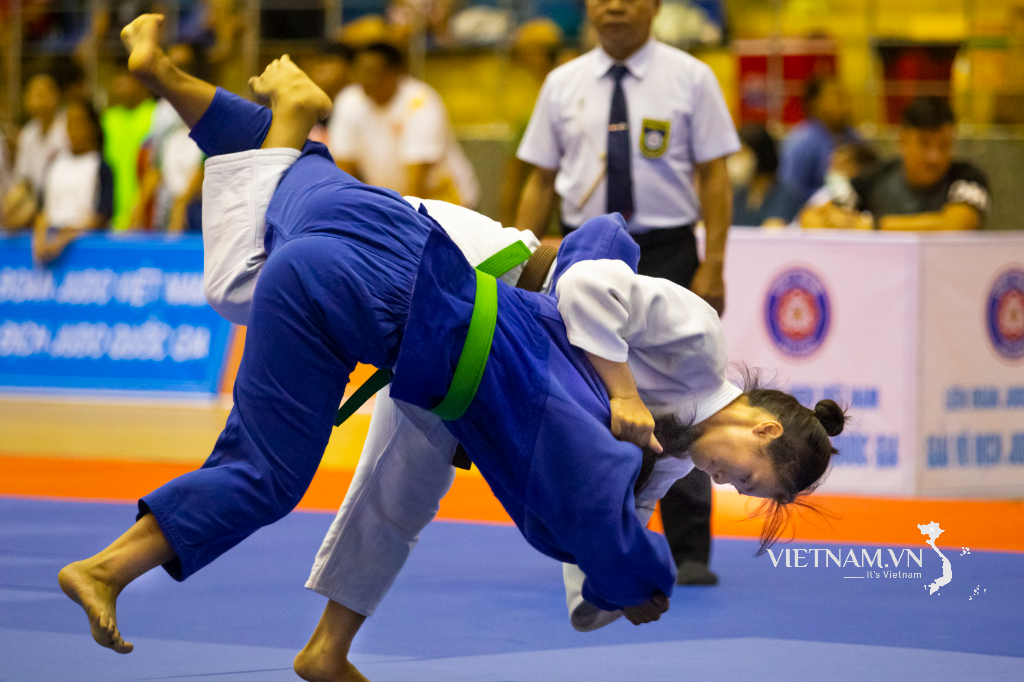

Comment (0)